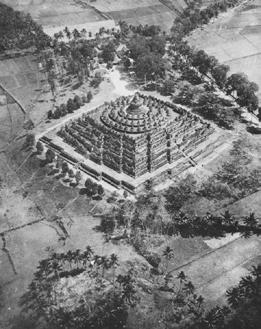
CUMA is a design studio led by Sophie Dars, Thierry Decuypere and Paul Mouchet at the Faculty of Architecture La Cambre Horta in Brussels. This year, students and teachers researched the multiple relationships between architecture and the sun in the past, present and possible future. If the summer of 2021 was marked by dramatic floods in northern Europe, the summer of 2022 was indeed marked by extreme drought, scorching temperatures and megafires. These conditions, still perceived as unprecedented, should rather be seen as the norm within the new climate regime through which we think architecture today.
Architecture has always dealt with solar gain. The fine balance between caption and protection achieved in vernacular architecture has been undermined by the advent of fossil fuels. What was a constituent part of architectural design until the beginning of modernism was abandoned in favour of mechanical air conditioning. The beginning of the twentyfirst century has shifted these concerns into a quantified focus on insulation against the cold. This in turn has resulted in buildings that sometimes suffer dramatically from rising summer temperatures.
Between September and December 2022, the Solar Club investigated the material and spatial alliances between architecture and the sun, creating a shared repertoire, both technical and imaginary, that places the sun as a primary component of architectural design. Nourished by the two pedagogical methods that led this collective research, this publication includes both a set of fifteen iconographic atlases and photographic documentation of large models of architectural projects and devices and materialized in the studio space.
The atlases show a thorough research in terms of specific themes and narratives. Following the principle of speculative fabulation, they oscillate between a factual collection of architectural devices and speculations on ways in which these devices can be deployed. Relating experiments by architects, engineers and self-taught inventors, these atlases sweep through disciplinary fields as diverse as aerospace, optics, anthropology, contemporary art, and more, over a period that spans from premodern myths to the futuristic delusions of geo-engineering. It is an exciting work that will appeal to students in architecture as well as to anyone interested in the impact of renewable energy on our ways of life.
and ball bearings, these ingenious minds made architecture move. If some projects were motivated by the relationship between the building and the sun, the motivations of some others were less obvious. Nevertheless, these curious constructions, whether built for recreational, scientific, or hygienic purposes, offer a variety of eclectic shapes that could follow the sun.
The Rebound Effect 94–123
Raphaëlla Castreuil
Hadrien Chevalier
Arthur De Merlier
Emeline Ergo
#sun
#light
#reflection
#rebound
#mirror
Reflection occurs when a ray of light enters the interface between two environments. This event is said to be specular when it meets a smooth or polished surface. Different scientists, such as Archimedes, have seized this phenomenon in order to use it for strategic purposes. In the field of construction and architecture, solar reflection, along with its calorific, energetic, and luminous capacity, is often seen as a material. Its manipulation requires the creation of new tools and a deep understanding of its properties. The inventor Guy Rottier, by understanding how light travels, imagined solar devices that could transport and collect sunlight. These ‘light’ collectors show a real potential in the search for new spatialities.
American Solar Houses 124–145
Bastien Casorla
Lucie Glaude
Yanis Morsa
Alizée Xhonneux
#solarhouses
#USA
#counterculture
In an American society fascinated by space exploration and animated by a strong counterculture movement, the 1973 oil crisis created doubts about the future of energy. Solar design was then presented as a solution: an ideal towards total autonomy. This led to different approaches: a first was explored by the American counterculture movement along with the idea of self-building and political autonomy; a second, carried by the state, offered a more rationalized and institutionalized form. The solar house then became a political object, rich in experimentation and iterations, resonating with alternative architecture and the building industry.
Joséphine
GauthierMahaut Guerin Ladouce
Noa Richard
Florent Van Lierde
#MassProduction
#PowerStation
#EnergyIndependence
#photovoltaic
#thermodynamic
During the 1970s and 1980s, a new solar-orbital fascination emerged. Utopian and dystopian science fiction narratives, along with radical architectural projects, fed a vast collective imaginary. Technical inventions linked to the use of solar energy gave rise to sun-driven technologies capable of answering the limitation of fossil fuel energy sources. Transposing these systems at a large scale requires specific sites, like deserts. However, the important impact that such solar farms have on the ground is questionable: their footprint expands as production needs grow. Hybridization with other activities can therefore help this technology to come closer to human settlements.
Aerobic Sun 170–193
Vanessa Boucher
Fiona Genatzy
Félix M. Roy
Capuccine Rombi
#air
#solarchimney
The uneven sun radiation on the Earth’s surface creates convection loops and powerful physical events between air masses. Since the beginning of the nineteenth century, the mechanical power that offers heated air travelling upward has led to a series of experiments of solar chimneys and vortex towers. These inventions were seen as a potential alternative to existing methods of energy production. Mostly produced outside of cities, energy is an abstract concept whose physical impact is difficult to grasp. Knowing that these aerothermal power plants would occupy a considerable area, can we imagine dividing the energy needs into a series of urban interventions that could change our relationship to energy? Hundreds of patents offered diverse typologies. Drawing from this eclectic source of forms and ideas, and taking advantage of their spatial impacts and energy potential, could allow us to sketch the return of a productive landscape of smokeless chimneys. An aerobic city breathing in the sun.
006 “Hulk Transformation” by Simonson, W. (1980). 007 Penetration into matter of different radioactive radiations. “Pénétration dans la matière des différents rayonnements radioactifs” by Unknown. (n. d.).).

008 X-rays at customs. “Passive milimeter imaging (PMI)” by Colomina, B. (2019).














